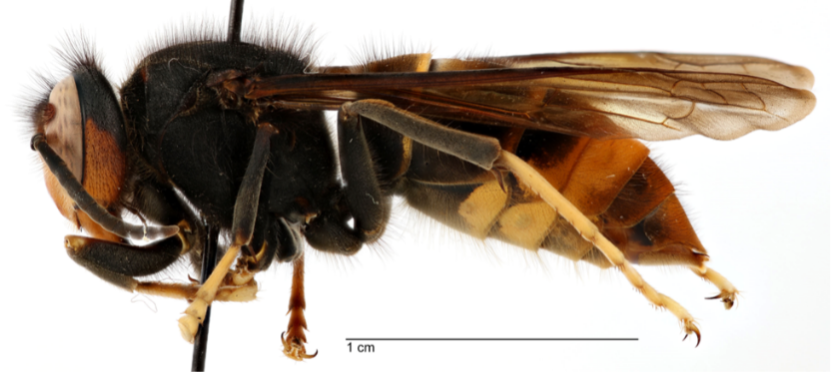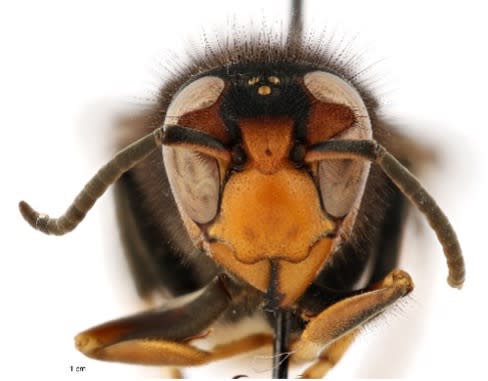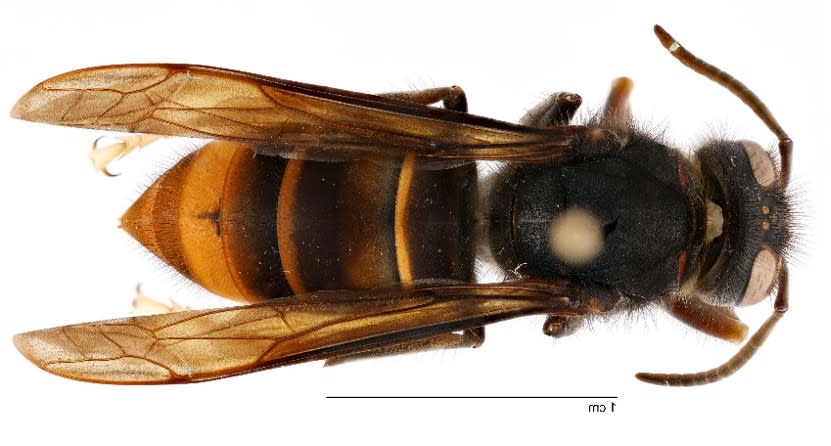Invasive hornet species found in the US for the first time

SAVANNAH, Ga. (WSAV) — Bee enthusiasts may be surprised to hear that a new threat has arrived in the U.S. — yellow-legged hornets.
On Aug. 9, the U.S. Department of Agriculture’s Animal and Plant Health Inspection Service (APHIS) confirmed that a non-native hornet species, a yellow-legged hornet, was seen in Georgia for the first time after being spotted on a Savannah property by a local beekeeper.
According to officials, this is the country’s first sighting of a live yellow-legged hornet.
Don’t be mesmerized – you should kill this dazzling bug
Yellow-legged hornets are native to tropical and subtropical areas of Southeast Asia and have become established in most of Europe as well as parts of the Middle East.
While they look similar to other native species of hornets and bees, their legs are partially or primarily yellow. Their body and head coloration can vary, however, according to the Georgia Department of Agriculture.
One of the biggest issues with this insect is that it constructs large, egg-shaped paper nests in trees above the ground. These massive nests can house an average of 6,000 wasps.
Wildlife officials are now encouraging anyone who sees the insect to report it to their local department of agriculture as the hornets can pose a serious threat to honey production, native pollinators and the agriculture industry as a whole.
Photo courtesy of the Georgia Department of Agriculture Photo courtesy of the Georgia Department of Agriculture Photo courtesy of the Georgia Department of Agriculture
Here is what to include with your report, if possible:
Your name and contact information.
The location of the sighting.
Date of sighting.
If you can, safely take photograph(s) of the hornet (we generally can only confirm a report with a photo or specimen).
Location and approximate height of the nest if found (Is it in a tree? Approximately how high is the nest?).
If you have no photo, please include a description of the size of the insect, the color of the head and body, and what it was doing.
Description of the hive loss/damage (if no photo is available).
The direction the hornet(s) flew when flying away.
Georgia agriculture officials say that there are several native species of hornets and wasps that may resemble the yellow-legged hornet. To see photos of possible lookalikes, click or tap here and search “yellow-legged hornet.”
It’s been nearly four years since another invasive hornet, the Asian giant hornet, was first reported in the U.S. More commonly known as murder hornets, the insect set the nation abuzz because of its tendency to leave “piles of dead bees, most of them headless, outside their beehive,” the Washington State Department of Agriculture explained.
The bug has since been renamed the northern giant hornet by the Entomological Society of America. Sightings of the insect have also diminished, according to reports.




